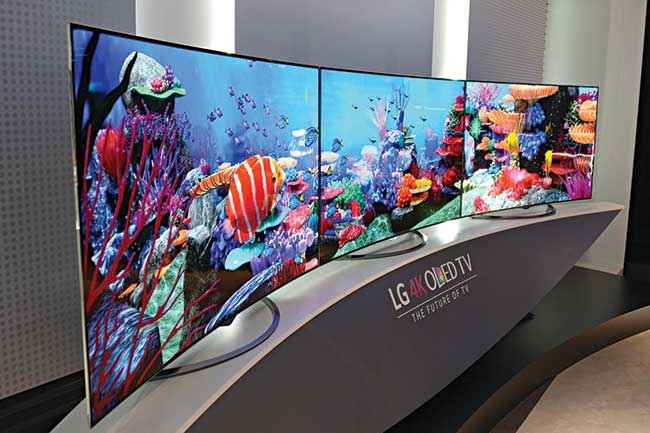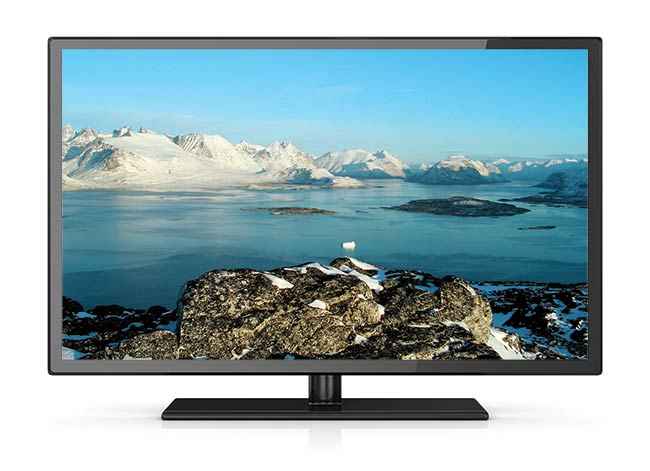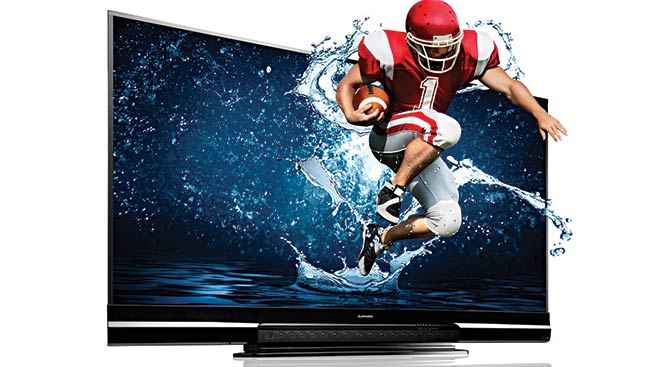Monitor buying guide
All you need to know to make an informed decision while buying a monitor.
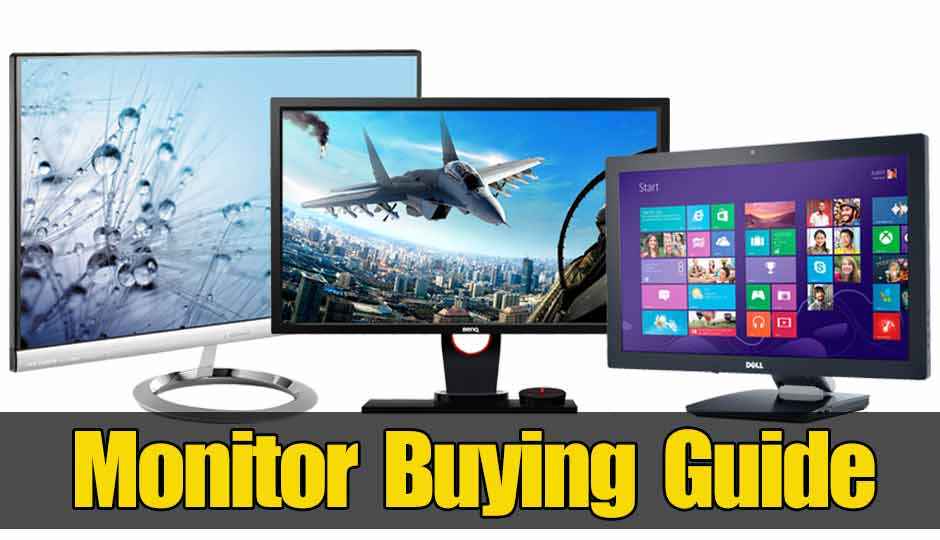
 Survey
SurveyMaking the right display choice heavily depends upon the type of application intended. The parameters vary wildly depending upon whether you’re looking for a display that will serve as a TV in the living room, one that is meant to go with your gaming rig, or if you happen to be the sort of person who bases his mobile phone purchase largely upon the quality of the screen. Looking at gaming monitors, the choice is primarily restricted to LED-backlit LCD panels. However, you can always consider OLED TVs, which offer significantly better image fidelity provided you’re willing to spare no expense. We will tackle the differences between the two technologies a bit further down, but first let’s figure out the first step in choosing the right monitor – that is, which panel should you go for?
TN Panels
The most common panel type in the market, TN’s are as old as commercially viable LCD technology itself. If your TV manufacturer hasn’t listed out an some exotic technology underpinning the panel, chances are it’s the good ol’ TN panel. Because this panel type’s simplicity and the fact that it has existed for donkey’s years, this allows it to be ubiquitous due to cheaper manufacturing cost. However, low cost isn’t its only trick. TN panels are by far the quickest when it comes to response time. That is, the pixels within this panel are capable of changing their state quickly and thereby reduce motion artefacts such as blur. That’s why nearly all gaming monitors that support some sort of high refresh rate technology happen to be TN panels. Monitors that also incorporate active LCD shutter based 3D support usually employ TN panels because the 3D implementation requires monitors capable of frame rates upwards of 120 Hz. Modern TN panels catering to gamers promise better motion handling and smoother experience by incorporating true 144 Hz refresh rates. This isn’t meant for 3D implementation, but to offer fluid gameplay experience for FPS gamers, where faster screen refreshes makes the difference between a frag and getting fragged.
It’s cheap, fast, and perfect for gaming, so what’s the catch, you ask. Well, the prime weakness of this panel tragically happens to be picture quality. Make no mistake, the overall performance has improved by a wide margin over the years, but this technology still pales in comparison to other panel types. Mind you, a decent TN panel can still provide sharp and detailed picture with adequate contrast around the 1000:1 mark. However, the colour reproduction isn’t as accurate as the competition. In fact, the overall vibrancy and colour performance is noticeably lacking. That, sadly, isn’t even its main problem. Restricted viewing angles are by far its biggest failing. Don’t go by the specs, where you can find generous viewing angles mentioned, but the amount of colour shift in practical terms is disconcertingly high. View these panels from reasonably off centre position and the colour shift gets worse to the point of complete inversion, wherein the image appears as a film negative. While controlling horizontal viewing angles is relatively easy in a monitor for a single user, controlling the vertical viewing angle is a lot more difficult. If you have a large enough monitor (say 27-inch), colour shifts are going to be a serious problem unless we’re dealing with a really good TN panel.
In short, choose TN panels only if you value 3D and gaming over colour accuracy. These are definitely not the kind of panels you choose for colour accurate web designing, video production, and photo manipulation purposes.
IPS Panels
If TN is at one end of the LCD quality spectrum, IPS (In Plane Switching) panels lie at the very extreme. Nothing beats this technology when it comes to absolute picture quality. It delivers the trifecta of image quality, colour accuracy, and viewing angles, thereby making it indispensable for colour accurate work such as web/graphics design and photo/video editing. As expected, these monitors also happen to be at the higher end of the price spectrum. But for the money, you get sharp, crisp picture with vibrant colour reproduction and viewing angles as wide as 178 degrees. In fact, IPS panels are the way to go if you’re looking for a larger display meant to accommodate more than one viewer.
Pricey IPS panels may offer much higher image fidelity than TN panels, but the technology still has its Achilles heel. The response time of this technology is the slowest of the lot, and ranges from 6 ms to 16 ms depending upon how deep your pockets can go. Make no mistake, this is only a tad bit slower than the average TN panel and not even noticeable in day to day usage. However, slower response time can be telling in video games. If you’re an FPS gamer who’s particular about image quality, you might want to choose IPS panels that deliver a response time of 8 ms or lower.
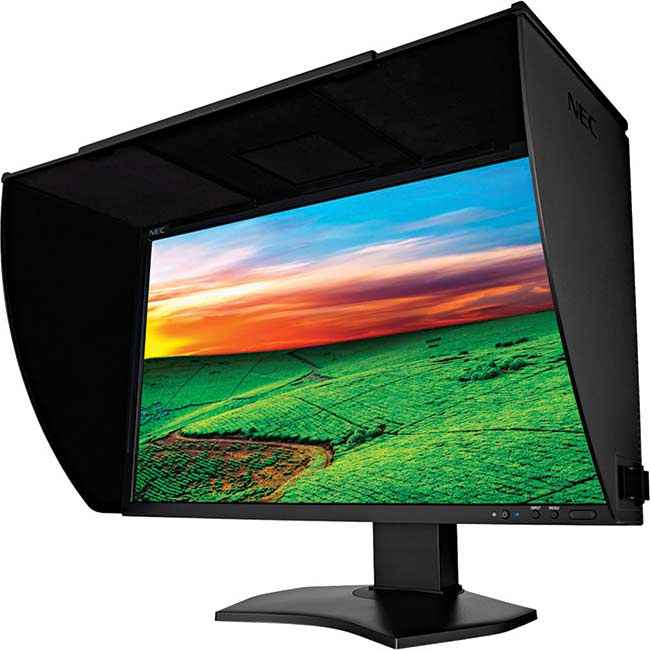
Dig deeper within the IPS hierarchy and you’ll find further subdivisions that are differentiated by their inherent pixel structure. Each variant has its own pros and cons, wherein parameters such as colour accuracy, contrast, and black levels vary according to the technology employed. S-IPS panels, for example, cost a premium and can be identified by the presence of a purple hue on blacks, when the screen is viewed from chronically acute angles. The cost factor makes this IPS type not as widespread. This is especially true of the more modern H-IPS panels, which incorporate a pixel structure that leads to improved contrast ratios and finer pixel pitch for improved image quality.
Most affordable IPS panels, however, are e-IPS that are pretty decent image quality wise, but only offer 6-bit colour depth. This is rarely an issue considering modern video processing hardware does a pretty good job at FRC/dithering to achieve true colour output despite the 6-bit panel limitation. H-IPS and S-IPS panels with true 8-bit panels are usually necessary in prohibitively expensive colour accurate monitors for professionals.
VA Panels
Vertical Alignment (VA) panels lie somewhere in the middle of the cost/quality spectrum of LCD displays. This panel type is further dubdivided into S-PVA/MVA and offer significantly better colour as well as generous viewing angles when compared to TN panels. Again, like the IPS panels, VA panels tend to have slower response times. Since this technology is more or less similar to S-IPS, it also faces the same problems. Even though VA panels deliver great colour performance and wide viewing angles, it’s still not as good as IPS panels. To make matters worse, the response times is worse when compared to IPS. These panels are definitely not the right fit for gamers, because they tend to add palpable input lag as well.
On the flip side, VA panels tend to offer better blacks even when compared to IPS due to their inherently better contrast ratios. Unfortunately, the performance isn’t as balanced because these panels are marred by serious colour shift issues, which also lead to annoying brightness levels across the width, especially when viewing even from a slight off centre angle. What’s more, even the central viewing position isn’t immune to issues. Colour shifts tend to cause reduced darker details in dark scenes, even when viewed directly from the centre. While some users aren’t sensitive to these colour shifts and uneven brightness, but still others deem it a deal-breaking issue. Thankfully the proliferation of cost effective IPS panels means that VA technology has more or less been edged out. You’re better off avoiding monitors with these panels, since you’re likely to find a good IPS alternative at roughly the same price range.
The World Beyond LCD
LED-backlit LCDs is doing great in the computer monitor space, but once you enter the realm of larger screens, it opens up the market for OLED alternatives. The sublime plasma technology may be dead, but it’s throne is taken over by another capable emissive alternative that is OLED, which fills in the gaps left behind by LED displays. What follows is an overview of how the emissive OLED displays trump transmissive LED panels in crucial picture quality parameters.
Rich Colours
Colours in LCD panels are limited by their rather convoluted means of colour reproduction. These displays essentially use liquid-crystal filters to block and bend light to create different colours. This isn’t the most fool-proof or efficient means of creating colours, and is marred further by optical anomalies that compromise colour fidelity. On the other hand, every individual pixel in an OLED panel generates accurate colours by exciting the phosphors to emit light of desired colour. Since this approach is similar to that of CRT TVs, OLED sare better at producing excellent contrast levels and rendering accurate colours with rich saturation.
Better Blacks
Being emissive displays, OLED don’t require backlighting, which is the primary cause of black crush, or the inability to render black detail in LED panels. OLEDs can achieve perfect black levels because these panels can switch individual pixels off completely. The lack of a backlight fouling with pixels that are supposed to be darkened, affords much better black detail. Full-matrix backlit LED TVs advertised as locally-dimmed panels try to get around this problem, but they end up introducing the distracting halo effect in the darker scenes.
No Backlight Bleed
Backlight bleed, as the name suggests, is a typical problem faced by transmissive displays such as LCDs and LED-backlit LCDs. Conspicuous bright and dark spots spread randomly across the panel are tell-tale signs of this phenomenon affecting virtually all LED televisions. Such bleeding affects colour and picture uniformity, and is caused by range of factors ranging from imperfect backlight diffusion panels to chassis deformation. Since backlight bleed is linked to material and build quality, it is less prevalent in high-end LED panels. But because it affects cheaper displays the worst, it makes their already poor grey-scale performance end up looking even worse off. OLED TVs, on the other hand, don’t suffer from these gremlins. These emissive panels don’t have to bother with backlights and complicated diffusion panels like LCD panels, thereby making them completely immune to these issues.
Faster Response Time
LCD displays have a much slower pixel response time as compared to OLEDs, which are ten times as fast as conventional LED displays. Pixel response time represents the delay in transitioning from grey to black and white to black states by individual pixels. LEDs are marked by slow response times because the liquid crystals are reconfigured by electrical stimulation to modulate the backlight. The pixels are slow to refresh because the liquid crystals can’t change states fast enough, thereby causing fast moving images to appear blurred to the human eye. Slow response time can be an issue if you watch a lot of sports, action movies, or play video games. Spend more on LED televisions and you’ll find fancier models that employ electronic wizardry such as backlight scanning, higher refresh rates, frame interpolation, and pixel overdrive to mitigate the issue. Interestingly, these can also be applied to OLEDs for even better blur reduction.
Better Viewing Angles
Compared to OLED panels, LEDs are significantly more complicated. This complex design also results in the optimal viewing angle being restricted to a narrow sweet spot directly in front of the display. That’s because transmissive LCD panels pass light through various layers of colour and polarising filters in addition to a liquid crystal layer that block, bend, and vary the intensity of light to produce images. It’s the resulting gap between the backlight and the various layers that introduces colour shift and other picture quality imperfections when viewed from extreme angles. Newer LCD technologies such as IPS panels have greatly improved off-axis screen performance, but nothing comes close to the viewing angles achieved by OLEDs. Because these panels emit light – as opposed to LEDs blocking it – they offer excellent off-axis performance, with virtually no colour and gamma uniformity issues even when viewed from extremely acute angles.
It's amply clear that OLED displays are worthy successors to the legacy of plasma and CRT technology. It's overcomes the problems of size, weight, and power inefficiency of its emissive predecessors and in some aspects even improves upon the picture quality. Unfortunately, the efforts of the LCD lobby, which obviously wants to safeguard its multi billion dollar investment in manufacturing plants, could see the technology meet the same fate as plasma televisions. The fact that all major TV manufacturers are pushing the more expensive, yet inferior Quantum Dot LCD technology as a replacement to OLED TVs is quite concerning. Mobile phones is the only space where OLEDs are being pushed thanks to the efforts of manufacturers such as Samsung, which regularly outfits its flagship offerings such as the Galaxy S7 with AMOLED displays. The fact that Apple itself has recently ordered 100,000 OLED panels from Samsung for its iPhone is another good sign.
A Matter of Resolution
Resolution has different ramifications depending upon the type of application. IPS Monitors generally ship in wider screen size variation with generous resolutions such as 2560 x 1440 instead of 1920 x 1080 for 27-inch models and 2560 x 1600 for 30-inch models. But before you make that sort of commitment, make sure that your gaming rig is good enough to handle the extra load. As a thumb rule, Full HD resolution is good enough for TV usage. You don’t want to get 4K TVs yet because there isn’t any real 4K content and existing Full HD streaming and Blu-ray content will look worse on a non-native 4K screen.
Apart from the usual trappings of OLED and LCD, panels also come in glossy and matte choices. The glossy variants are come in handy if you are keen on maintaining blacks fidelity and prefer your colours popping out unhindered. On the down side, these panels tend to be extremely susceptible to glare and reflections. Modern glossy plasma panels compensate by employing high-tech anti-reflective and anti-glare coatings, though. Matte displays, on the other hand, may reduce glare and reflections, but an aggressive matte coating can affect sharpness and diminish the integrity of whites, as well as hinder black levels. It’s wiser to opt for glossy displays if you have ideal lighting conditions and no instances of glare and reflections.
Going 3D
This matter is more subjective than objective, but with my personal preference being to avoid 3D like the plague. The reasons for this are abundant. For starters, there’s a lack of substantial 3D content, and even when you do find 3D films, the quality isn’t up to the mark. Important picture parameters such as sharpness, brightness, and colour accuracy suffer thanks to the rather convoluted nature of 3D display technology, because separate images need to be directed at each eye. Since this sort of stereoscopy is unnatural, the human brain perceives the relayed 3D image as an anomaly and actively tries to correct it. This is a major cause of headaches as a consequence. What’s more, letting kids view 3D content can be detrimental. The brains of younger children are still adapting and learning, so it’s a bad idea to confuse the same with 3D imaging, which is inherently disorienting and can potentially cause long-term spatial learning issues.
However, if you are still keen on taking a dive into the 3D realm, you have to focus on the two main 3D technologies. This includes passive 3D that employs polarised glasses and active LCD shutter technology, which tends to be more expensive and bulky. The former is relatively low tech, but tends to consistently deliver a more stable and fatigue-free 3D experience. LCD shutter technology, however, may exhibit flickering and cause more headaches despite being complicated and expensive as well. Nevertheless, a bad implementation of passive 3D tech will still pale against a good active shutter LCD setup. Auditioning the display is a more prudent means to reach a conclusion.
Final Considerations
HDMI is the de facto standard and therefore you need at least three of those inputs at the bare minimum for your set-top box, DVD/Blu-ray player, and video game console. If you plan to hook up your PC as well, and it’s perfectly alright to do so, you may want to check out the superior DVI-D, and in some rare cases, Display Port inputs as well. These are foolproof means to get signal from your PC because the DRM-addled nature of the HDMI standard means that certain TVs (those made by Panasonic, for example) will not let you hook up a PC through the HDMI interconnect.
Additional features such as digital audio outputs and TRS stereo/headphone outputs come in handy to get a clean digital audio signal out of the TV or to connect headphones. Most modern TVs ship with USB inputs, which allow playback of various video formats. This is a boon for those who want to watch photos or downloaded movies, but don’t expect them to deliver the performance and the file support of standalone devices specifically meant for the purpose.
Smart TVs generally tend to be quite expensive, so you might want to reconsider paying extra just for this feature when you can buy aftermarket boxes (or even certain Blu-ray players) that allow you to convert any regular TV set into a smart TV. These TVs incorporate Wi-Fi and Ethernet connectivity and support inbuilt apps to access streaming video services. At any rate, just don’t expect the same level of usability and speed as your PC or smartphone and you won’t be disappointed.
Read our Guide to Monitor Calibration to check and perfectly calibrate your monitor.
Content Lead at MySmartPrice.com by day and avid gamer/DIY geek at night, Nachiket Mhatre channels a decade of experience writing about consumer technology, PC hardware, audio/video, and videogames.
